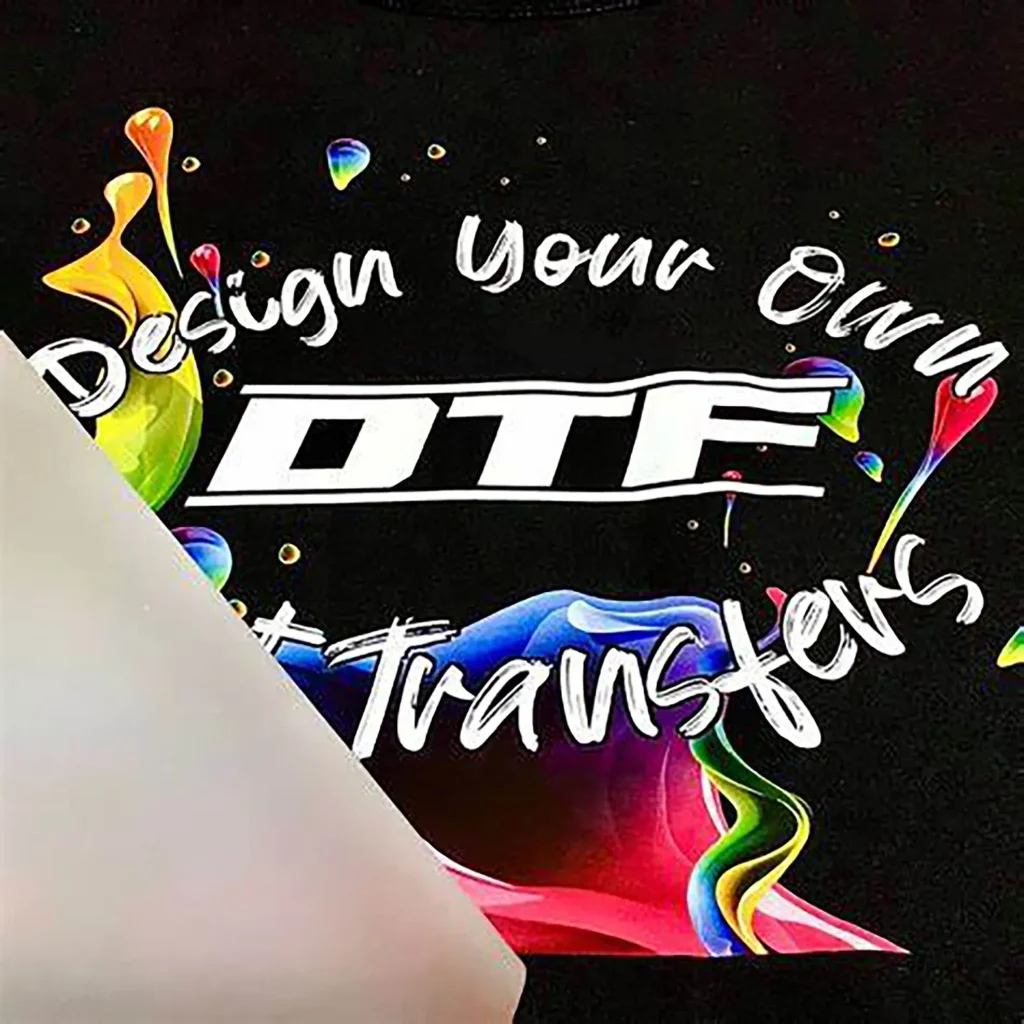DTF Transfers, or Direct to Film transfers, have transformed the way we approach garment decoration, allowing enthusiasts and professionals alike to create stunning designs with ease. This innovative printing method utilizes a unique combination of DTF printing equipment, including specialized printers and heat presses, to produce vibrant, durable graphics on various fabrics. To master the art of DTF transfers, one must understand the diverse DTF film types available and select the best DTF printers that suit their needs. Additionally, incorporating the right adhesive powder for DTF applications ensures that each design adheres perfectly, resulting in high-quality finished products. In this guide, we will delve into the essential tools and techniques necessary to achieve flawless DTF transfers every time.
Like Direct to Film printing, the creative world of garment decoration is constantly evolving, introducing new methodologies for applying designs to fabrics. This cutting-edge process involves transferring artwork from a specially coated film onto a variety of materials, making it an excellent choice for customized apparel. Key elements in this technique include selecting appropriate transfer films, high-quality printers, and effective heat presses to achieve vibrant results. By utilizing quality adhesion products, crafters can enhance the durability of their designs, ensuring they stand the test of time. Throughout this exploration, we will provide insights into the tools and practices that are essential for perfecting this modern printing process.
The Importance of Choosing the Right DTF Printer
Selecting the right DTF printer is crucial to achieving high-quality prints. Printers designed specifically for DTF transfers, often utilizing advanced inkjet technology, can provide vibrant colors and detailed imagery. Look for models that support various DTF film types and that offer high resolution. Brands like Epson offer innovative solutions that are geared towards DTF processes, providing robust performance for both small and large printing operations.
Additionally, it’s worth considering the volume of printing required when choosing a printer. If you’re planning on producing large batches of prints, a model with faster printing speeds will be beneficial. Furthermore, ensure that the printer is compatible with high-quality DTF inks to maximize your print quality and consistency. A good printer can make a tangible difference to your output, significantly impacting the durability and overall appearance of your garments.
Exploring Essential DTF Film Types
Understanding the types of DTF films available is key to successful transfers. DTF films come in various options, including clear, white, and even specialty films designed for specific fabric types. Clear films are generally favored for light-colored garments, allowing the fabric’s background to contribute to the final look, while white films are preferable for dark fabrics to ensure the colors pop beautifully.
Choosing the right DTF film impacts both the appearance and the longevity of the finished product. It’s crucial to select films that have a proper adhesive coating, allowing for seamless transfer without compromising the design’s quality. Proper conduct of trials on different fabrics can help you find the perfect match for your projects, enhancing both aesthetic and performance.
Understanding Heat Press Techniques for DTF Transfers
Using a heat press correctly is imperative for the success of DTF transfers. The right temperature and pressure settings are vital to ensure proper adhesion without damaging the garment. Typically, settings around 320°F for 10-15 seconds work best, but alterations may be necessary based on the fabric’s thickness and composition. Learning how to maintain consistent pressure is equally important; uneven pressure can lead to inadequate transfer quality.
Moreover, practicing alignment techniques will help ensure that the design is perfectly placed every time. Training yourself to recognize the proper timing and temperature cues can aid in developing skills that lead to flawless transfers. Additionally, experimenting with different heat presses, such as clamshell or swing-away models, can provide insights into which works best for your specific needs.
Adhesive Powder: The Hidden Hero of DTF Printing
Adhesive powder plays a critical role in the DTF printing process, binding the ink with the fabric during the heat press application. This powder must be sprinkled evenly on the printed design after it dries but before the heat application. Selecting a fine quality adhesive powder ensures that the transfer adheres effectively without adding unnecessary weight to the final product.
Working with the right adhesive is essential to prevent issues such as color bleed or design lifting over time. High-quality adhesive powders will also contribute to the longevity of the prints, enabling your designs to withstand washes and wear. Emphasizing the influence of adhesive powder in your DTF process will lead to better production quality and customer satisfaction.
Choosing the Right Software for DTF Printing
Having the appropriate software can significantly enhance your DTF printing workflow. Programs such as Adobe Illustrator or specialized RIP software allow you to fine-tune your designs, manage color profiles, and prepare files appropriately for printing. This preparation is vital in ensuring that the printed designs reflect the intended aesthetics perfectly.
Moreover, investing time in learning how to use the software effectively can help streamline your production process. Many software solutions offer features that can help automate repetitive tasks, thereby improving efficiency. By integrating high-quality design software into your workflow, you can elevate the overall quality of your DTF transfers and maximize your printing output.
Regular Maintenance for DTF Printing Equipment
Regular maintenance of DTF printing equipment is essential for longevity and optimal performance. This includes cleaning the printer and heat press regularly, ensuring that dust and ink residue do not affect the quality of your prints. Maintenance also involves checking the calibration of your printer to prevent issues such as misalignment or color inconsistencies.
By establishing a routine maintenance schedule, you can prevent potential down-time caused by equipment failures. Moreover, following manufacturer guidelines for both the DTF printer and heat press ensures that your equipment remains in good condition, providing you with the high-quality performance you need for successful DTF transfers.
Frequently Asked Questions
What is a DTF printer and why is it crucial for DTF transfers?
A DTF printer is a specialized machine designed to print directly onto DTF film, which is essential for creating vibrant and durable DTF transfers. It uses either inkjet technology or eco-solvent printing to ensure high-quality designs, making it the backbone of the DTF printing process.
How does a heat press for DTF work in the transfer process?
A heat press for DTF applies consistent heat and pressure to transfer designs from DTF film onto fabric. Typically set at around 320°F for 10-15 seconds, the heat press solidifies the bond between the adhesive powder and the fabric, ensuring lasting quality in the print.
What types of DTF film are available and how do they affect transfer quality?
DTF films come in various types, including clear and white films. Clear films are best for light-colored fabrics, while white films provide vibrant prints on dark materials. The right choice of DTF film significantly influences the color vibrancy and quality of the final print.
What role does adhesive powder play in DTF transfers?
Adhesive powder is sprinkled on the printed design once the ink is dry, creating a strong bond during the heat pressing stage. It’s essential for ensuring that the ink adheres well to the fabric, enabling high-quality and durable DTF transfers.
What features should I look for in the best DTF printers?
When searching for the best DTF printers, prioritize high-quality ink output, compatibility with various DTF film types, and overall reliability. Brands like Epson and Mimaki are highly recommended for their performance and capability in handling extensive print volumes.
How can I improve my DTF printing technique with the right equipment?
To enhance your DTF printing technique, ensure your heat press maintains consistent temperature and pressure, invest in high-quality DTF film and adhesive powder, and regularly maintain your DTF printing equipment. Additionally, practicing proper alignment and timing during transfers is essential for optimal results.
| Equipment | Purpose | Key Specs/Features |
|---|---|---|
| DTF Printer | To print designs onto DTF film | High-quality ink output, compatibility with various films, reliability. |
| Heat Press | Transfers designs from DTF film to fabric | Consistent temperature, clamshell or swing-away type options, adjustable settings. |
| DTF Film | Medium for printing that transfers designs | Clear or white films based on fabric color, excellent ink acceptance |
| Adhesive Powder | Bonds ink to fabric during heat press | High-quality powder, minimal thickness added to design |
| Software (e.g., Adobe Illustrator) | Prepares designs for printing | Manages colors, sizing, positioning, enhances workflow |
Summary
DTF Transfers have revolutionized the printing industry by allowing for vibrant and durable designs to be transferred onto various fabrics with ease. Understanding the essential equipment for DTF printing is crucial for anyone looking to excel in garment decoration. Key components such as a high-quality DTF printer, a reliable heat press, suitable DTF film, adhesive powder, and design software must be carefully selected and utilized effectively. By mastering these tools and techniques, printers can enhance their print quality and ultimately achieve greater success in their business efforts. Embracing DTF transfers empowers creatives to explore endless possibilities in custom printing.



